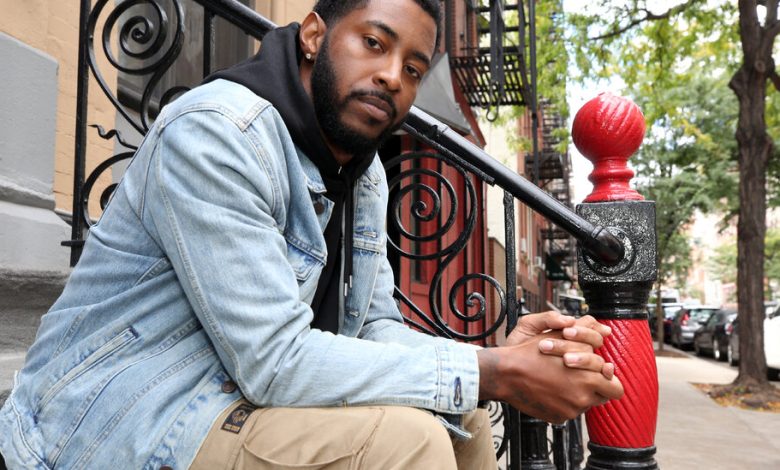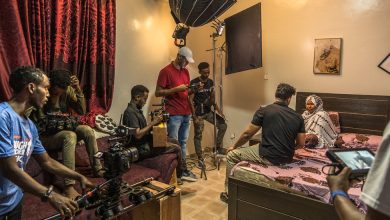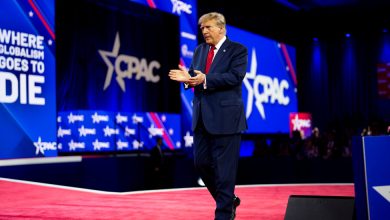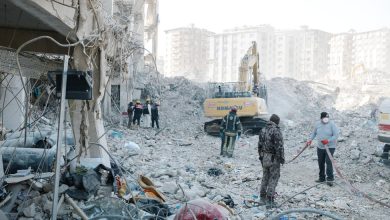How 1.2 Million Marijuana Arrests Will Shape New York’s Legal Market

For young Black men like Justin Sullivan, growing up in Harlem in the 2000s came with regular harassment from the police, making it risky to use marijuana. But when he started making white friends who also smoked weed, he learned that they were not under the same scrutiny.
“That’s when I started seeing how I was vilified for cannabis,” Mr. Sullivan, now 34, said in an interview.
Included with New York’s legalization of weed in 2021 was a central promise to give back to communities that were most harmed by the war on drugs. Now, state cannabis regulators have created an interactive map from 1.2 million marijuana arrests conducted across the state over the last four decades as a guide to which neighborhoods qualify.
Mr. Sullivan’s distressing experience could give him an advantage as he seeks one of at least 1,000 licenses that cannabis regulators in New York State plan to hand out early next year in a broad expansion of the legal market. Harlem, once a hotbed of drug arrests, is pinpointed in the mapping tool as a leading candidate for redress.
New York set a goal for half of all licenses to be awarded to applicants from the hardest-hit neighborhoods, along with women, racial and ethnic minority applicants, distressed farmers and service-disabled veterans. Regulators will use the map to help determine if applicants qualify as belonging to a disproportionately affected community. And it serves as a clear reminder of how drug enforcement arrests in New York have been concentrated in low-income, Black and Latino communities.
“This wasn’t darts on a wall,” said Tabatha Robinson, the director of economic development, policy and research of the Office of Cannabis Management, the state agency that released the mapping tool last month and regulates the recreational weed market.
Across the country, from California to Massachusetts, similar efforts to make the industry more inclusive have struggled. It has been no different in New York, where an interim dispensary licensing program has been halted since August by a lawsuit from veterans who say they were illegally excluded.
Researchers who put together the mapping tool analyzed the home addresses of all people arrested in New York State from 1980 through 2021. Enforcement in some neighborhoods was as much as 10 times higher than it would have been if arrests had been evenly distributed across the state, according to Damian Fagon, the state’s chief equity officer for cannabis.
New York City accounted for most of the arrests — about 1 million. The places with the most disproportionate arrest rates were all in the city: a jagged stretch of Brownsville, a boxy tract anchored by a major public hospital in East Flatbush and a triangular expanse of East Harlem surrounding the Robert F. Wagner Houses.
Arrests in the city were highest in the 2000s and early 2010s, during the peak era of stop and frisk, a period when police conducted millions of mostly unlawful stops targeting Black and Latino men.
Researchers have found stark racial disparities in arrests that could not be fully explained by the police’s persistent claims that they were driven by emergency calls and community complaints and not racial bias.
While the sum of marijuana arrests contributing to the map is staggering, it may be missing millions more encounters. The data set does not include stops where officers issued criminal summonses or wrote tickets for small infractions, where they took no action at all or where they used marijuana as a pretext but the stop did not result in a charge.
Mr. Fagon acknowledged the map’s limitations, but he said he believed it still captured the areas most harmed by marijuana arrests and provided people who have lived in those places with a pathway into the legal industry.
The state designated 40 percent of cannabis sales tax revenues to fund reinvestment grants in the places where arrests were high. People who have lived for certain periods in those areas can get priority consideration for business licenses, discounts halving application and licensing fees and financial assistance, training and help with operations.
Besides serving as a guide, the map will also serve to track whether the state is keeping its commitments. Henry Louis Taylor, an urban studies professor at the University at Buffalo, said the map will help determine whether business and job opportunities in the cannabis industry are flowing to where they’re needed the most. It will also be useful for assessing whether future reinvestment initiatives, like job training and health care programs, make a meaningful difference, he said.
“We’re going to be able to see whether or not, and to what extent, these communities are going to benefit from the legalization of marijuana,” he said. “So I think this is hugely important and significant.”
But the cannabis sales those initiatives depend on have lagged amid New York’s slow and chaotic rollout. Just 27 adult-use dispensaries have opened across the state since last December, though sales reached $83 million in the first nine months with the help of new farmers’ markets.
The new round of licensing is separate from the earlier, interim program that awarded 463 dispensary licenses to certain nonprofits and to people with prior marijuana convictions or their close relatives, which is now on hold. Regulators also plan to issue licenses for cultivators, processors, distributors and craft businesses that typically have five employees or fewer and can grow, process and sell their own products.
Mr. Sullivan, who plans to vie for one of the 1,000 new licenses, said his family wants to open a dispensary in a barbershop they have owned in Harlem for nearly 60 years. It would be on Frederick Douglass Boulevard in a stretch of Harlem where cannabis arrests rates have been four to six times higher than the state average.
Mr. Sullivan has never been arrested. But as a Harlem resident for many years he is eligible for extra consideration by cannabis regulators. He is also what the state calls a “legacy” dealer, someone who was part of the marijuana industry before legalization — a group that officials are keen on drawing into the legal market.
Mr. Sullivan’s maternal grandfather opened the barbershop in 1964 after migrating from Georgia. He became a successful businessman, obtaining several rental properties and opening the shop before he was sent to prison for six years in the late 1970s on charges that included marijuana distribution, his family said.
Harlem has changed since then, with famous landmarks like the Renaissance Ballroom and Lenox Lounge now home to retail chains, banks, and luxury homes that are out of reach for many longtime residents. Mr. Sullivan’s family has held on to the barbershop building, and they’ve turned a former speakeasy in the back room into a space for cannabis workshops.
“Our neighborhood’s disappearing,” said Phillip Ellison, 37, Mr. Sullivan’s step-cousin and business partner, and a lecturer in entrepreneurship at Tufts University. “So we’re lucky to have the privilege of having space.”



